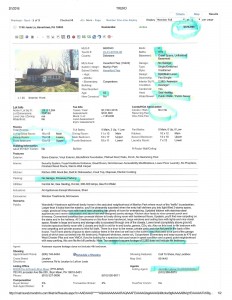 Once you’ve defined your criteria, it’s time to start looking on line to see if you can find properties that match your wish list. My recommendation is to use whichever property website (foxroach.com, realtor.com, zillow.com, trulia.com) you find easiest to navigate and save searches as well as receive updates when new matches hit the market. Put in a price range and I’d recommend going about 10% above your range as you might be able to get a property listed at $675,000 for $640,00.
Once you’ve defined your criteria, it’s time to start looking on line to see if you can find properties that match your wish list. My recommendation is to use whichever property website (foxroach.com, realtor.com, zillow.com, trulia.com) you find easiest to navigate and save searches as well as receive updates when new matches hit the market. Put in a price range and I’d recommend going about 10% above your range as you might be able to get a property listed at $675,000 for $640,00.
Some criteria to consider:
- Location
- School district
- Price range
- Square footage
- Number of bedrooms/bathrooms
- Garage?
- Central air?
- Finished basement?
- Lot size
- Age
Also, if you determine that houses in a category slightly above where you’d decided you would look seem WAY better in some way, you might want to re-evaluate (while remaining very clear on your other expenses and income—I’m NOT encouraging you to overcommit your financial resources). You want to provide parameters, but not ones that are so restrictive they return too few properties.
Once you start looking at MLS listings, you’ll begin to learn how to read both the actual print and the meaning behind some of the words. As far as the hard information goes, in addition to the bullet points above, the MLS should include:
- List price
- Taxes
- Type of heating and cooling, water supply (public or well),
- Waste removal (public sewer or septic)
- Days on market
Square footage is also usually included, though that one has a caveat: after the number, you’ll see either “S”,”L”, or “A”. Those letters tell you whether the Seller, Listing agent or county tax Assessor is the source of the square footage. You want to see “A”. Here’s why: if a seller finishes a basement, he may estimate that square footage and add it in. In our area, unless you’re looking at new construction which has the basement finished at delivery, finished basements are NOT included in square footage. So, when you are comparing listings, you’ll be looking at apples and oranges.
If an addition has been done, permits should have been pulled and, as a result, square footage should have been adjusted in the tax record . If, though, say a porch has been enclosed, it IS possible that that square footage will not show up in the tax record, but really is additional usable living space. So just be aware of what letter follows the square footage and if there’s any confusion or lack of correlation between that number and other property information, check with your agent.
Another important letter to look at is the one after the room names—“M” means main floor, “U” means upper floor (could be second floor or a finished attic space) and “L” means lower (usually a basement, except in a split-level). This distinction is important as it tells you whether you have any bedrooms that are on the main floor (which you may or may not want) and whether the family room is actually a finished basement or a main floor space. Also, sometimes a house with two full baths may have one on the main floor (instead of a powder room) and one upstairs which means there is no master bath. The fine print is important!
As far as specific language, after you read enough descriptions and visit enough properties, you’ll understand that “cozy” means small, “lovingly maintained by original owners” means not updated, “whimsical” means somewhat bizarre, “elegant” means slightly sterile or stuffy, “relaxed” means messy and “waiting for your personal touches” means the place needs a complete overhaul. So read the copy, but have a large bag of (grains of) salt nearby.

